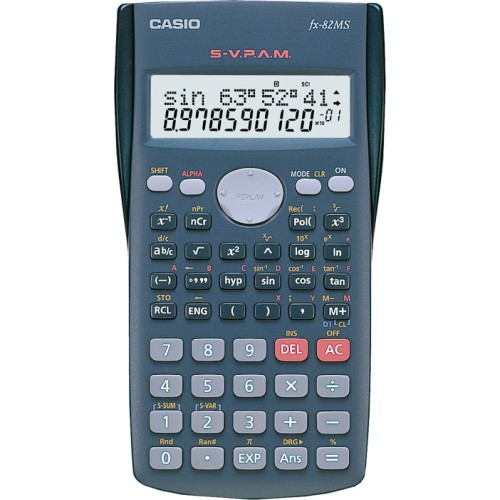Scientific Calculator
The Scientific Calculator: An In-Depth Exploration
A scientific calculator is an indispensable tool designed to handle complex mathematical calculations that go beyond the capabilities of standard calculators. These devices are widely used in fields such as science, engineering, mathematics, and technology. This article explores the features, functions, history, and applications of scientific calculators in detail.
1. What is a Scientific Calculator?
A scientific calculator is a specialized electronic device that can perform advanced mathematical operations, including trigonometric, logarithmic, exponential, and statistical functions. It is an essential tool for students, professionals, and researchers who require precision and efficiency in calculations.
2. Features of a Scientific Calculator
Scientific calculators stand out from basic calculators due to their wide range of features. Some common capabilities include:
a. Advanced Arithmetic Operations
- Handling fractions, percentages, and roots.
- Performing operations involving powers and exponents.
b. Trigonometric Functions
- Calculating sine, cosine, tangent, and their inverses.
- Supporting angle measurements in degrees, radians, or gradians.
c. Logarithmic and Exponential Functions
- Computing natural logarithms (ln\lnln) and common logarithms (log\loglog).
- Calculating exponentials (exe^xex) and powers of numbers.
d. Statistical Functions
- Performing statistical calculations like mean, standard deviation, and regression.
- Supporting combinations and permutations.
e. Memory Functions
- Storing, recalling, and clearing memory variables.
- Facilitating multi-step calculations without re-entering data.
f. Programmability
- Some scientific calculators allow users to write and store simple programs for repetitive tasks.
g. Complex Numbers
- Performing calculations with imaginary and complex numbers.
3. Historical Development
The evolution of scientific calculators reflects the advancements in technology over the decades:
a. Early Mechanical Calculators
Before the invention of electronic calculators, mechanical devices like the abacus and slide rule were used for calculations. These tools laid the groundwork for modern calculators.
b. The First Electronic Scientific Calculators
In the 1960s, companies like Hewlett-Packard (HP) and Texas Instruments introduced the first scientific calculators. The HP-35, launched in 1972, was a milestone as the first handheld scientific calculator.
c. Advancements in the 1980s and 1990s
- Calculators became more affordable and compact.
- Introduction of LCD displays replaced LED displays, allowing for better energy efficiency.
d. Modern Scientific Calculators
Contemporary scientific calculators feature high-resolution displays, enhanced processing power, and even graphical capabilities. Models like the Casio FX series and Texas Instruments TI series are widely popular today.
4. Applications of Scientific Calculators
Scientific calculators are versatile tools used in various domains:
a. Education
- They are essential for students in high school and college, particularly in courses like calculus, physics, and chemistry.
- Standardized tests often permit the use of scientific calculators.
b. Engineering and Technology
- Engineers use these calculators for solving equations, analyzing circuits, and performing design calculations.
- Fields like mechanical, electrical, and civil engineering rely heavily on such tools.
c. Research and Academia
- Researchers use scientific calculators for data analysis, model simulation, and theoretical calculations.
- They provide a quick alternative to computer software for simple computations.
d. Business and Finance
- While specialized financial calculators exist, scientific calculators are sometimes used for financial modeling and statistical analysis.
5. Benefits of Using a Scientific Calculator
a. Speed and Efficiency
- Complex calculations can be performed in seconds, saving time and reducing errors.
b. Accuracy
- Scientific calculators ensure precision in results, critical for scientific and engineering applications.
c. Portability
- Their compact size allows users to carry them anywhere.
d. Cost-Effectiveness
- They are affordable compared to other computational devices like computers.

6. Limitations of Scientific Calculators
While highly useful, scientific calculators have certain limitations:
- Learning Curve: Understanding advanced functions can be challenging for beginners.
- Limited Programming: Compared to computers, programming capabilities are basic.
- Display Constraints: Most calculators have limited screen sizes and cannot display detailed graphics.
7. The Role of Scientific Calculators in the Digital Age
With the rise of smartphones and computers, the relevance of standalone scientific calculators has been questioned. However, they continue to hold their ground due to:
- Specialization: Dedicated functionality for specific scientific tasks.
- Regulation: Permitted in exams where smartphones and computers are banned.
- Durability: Long battery life and robust design make them reliable.
8. Choosing the Right Scientific Calculator
Selecting a suitable scientific calculator depends on the user’s needs:
- For Students: Entry-level models like the Casio FX-82 or TI-30 are sufficient.
- For Professionals: Advanced models like the TI-36X Pro or Casio FX-991EX offer more features.
- For Programmers and Engineers: Models with programmability and graphing capabilities, like the TI-84 or HP Prime, are ideal.
9. Future Trends
The future of scientific calculators is shaped by advancements in technology:
- Integration with Software: New models may offer seamless integration with educational and research software.
- Enhanced Displays: Touchscreens and high-resolution displays are becoming more common.
- AI Integration: Future calculators could use AI to guide users through complex calculations.
Conclusion
The scientific calculator is a cornerstone of modern computation, bridging the gap between basic arithmetic tools and sophisticated computer software. Its adaptability, precision, and affordability ensure its continued relevance in education, research, and professional domains. As technology evolves, scientific calculators will likely embrace new features while retaining their core functionality, solidifying their place as an essential tool in science and technology.
